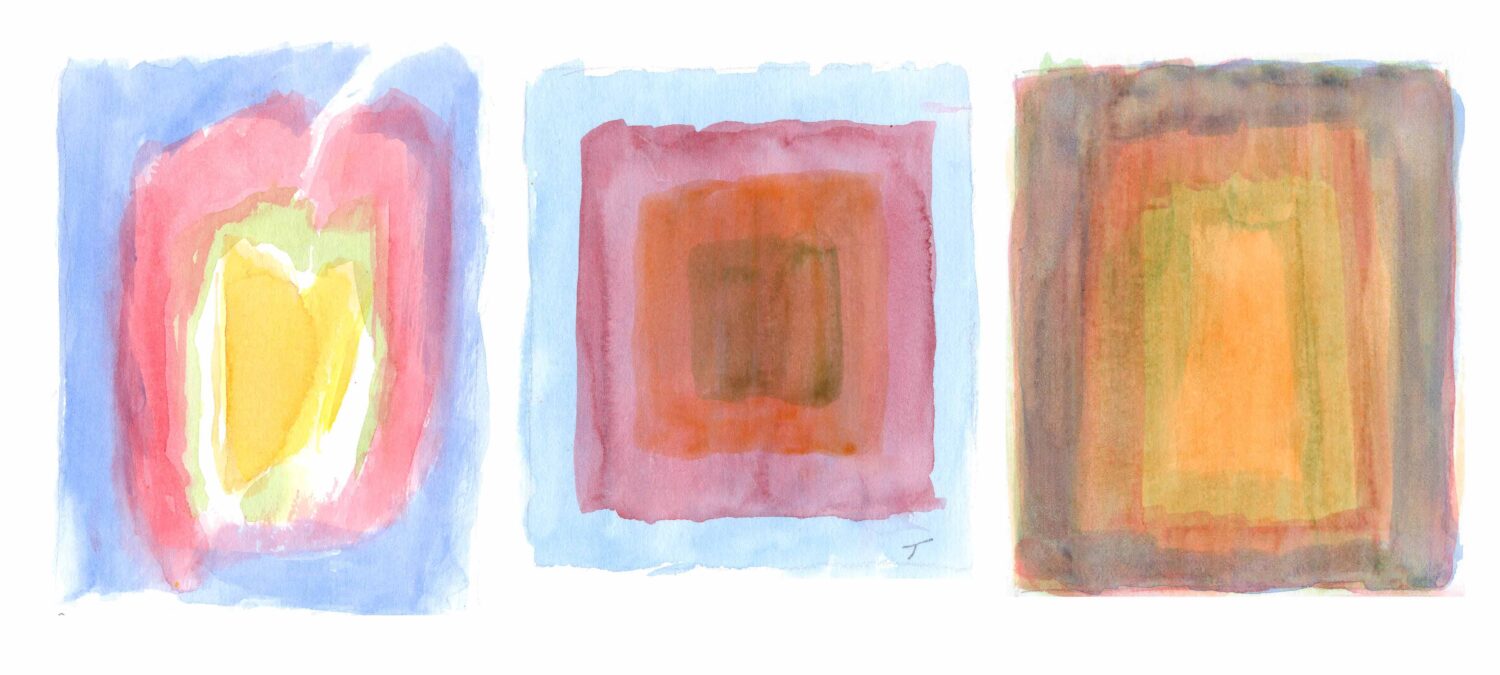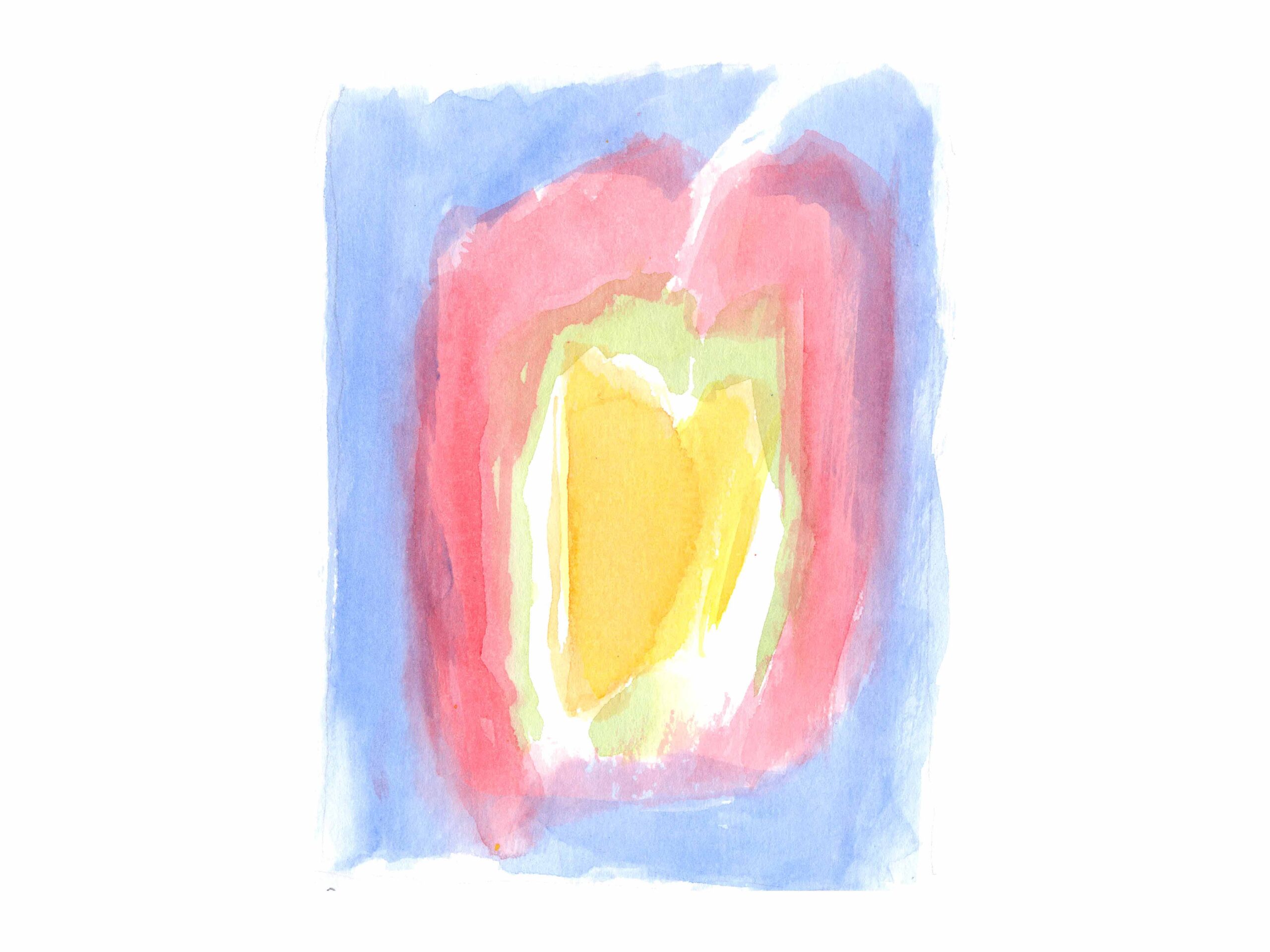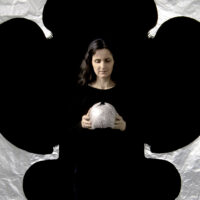For the author, cosmic evolution can be seen as a gigantic breath—a breath expressed not only through human consciousness and the four elements but also through the technological developments of humanity.
After the birth of Christ, what made people start counting time from the beginning again as an indication that the history of the earth had entered a new phase in its evolution? Obviously, this was not just an event with a regional impact on time. But then, it cannot be claimed by one religion alone, so there must also be references to it in other religious traditions, albeit under different names, stories, or prophecies.
Expectation
When rishis, the saints of ancient India, looked at the sun, they also absorbed love with its light and filled their being with it. This formed the image in their souls that a “man” dwells in the living light of the sun, who is the truth, the bringer of life. As they followed the divine rhythm in their breathing, they experienced the work of the sun being, which touched and strengthened the innermost part of the human being with every breath. In this way, they recognised that the secret name of the “man” who lives in the sun is “I”.1
The being with whom the saints knew themselves to be one in the rhythm of breathing is called “Vishvakarman” after his creative aspect—the All-Creator who forms the origin of matter and is its architect. They said that one day, he would approach the earth from the cosmic expanses and perform a sacrificial deed for humankind by connecting with the earth down as far as the elements, entering people’s hearts, overcoming evil, and awakening the consciousness of the “I”. This process is celebrated in the hymns of the Rig Veda, in which the god Vishvakarman transforms himself into the earth.2
Rudolf Steiner identifies Christ in the deity Vishvakarman, the “I” of humanity, who, coming from the sun, has united with the earth right down to the elements and has adopted it as his body.
Blessed Anna Katharina Emmerick saw in visions how the approach of Christ was awaited by various wise men on earth:
But nowhere was this ardent desire for salvation so pure, innocent, childlike, and faithful as in the hearts of the dear Magi from the East, who for centuries, in all their forefathers, had waited for it believing, hoping and loving.3
The expectation of a saviour through whom the divine would shine forth and who would bring about the turning point in earthly evolution was based not only on visions but also on the knowledge of the correspondence between the microcosm and the macrocosm.
As Above, So Below
Human beings today breathe in and out, usually without associating any experience with it. A soul living in mindful devotion accompanies the flow of breath in its two polar movements: inhalation and exhalation. Over time, we may become aware of two other smaller transitions in the middle of exhalation and inhalation. These four breathing phases, which we experience rhythmically, find their cosmic equivalent in the breathing of the earth, which is expressed in the Christian festivals of the year.
- Greatest inhalation – Christmas
- Middle of exhalation – Easter
- Greatest exhalation – St John’s tide
- Middle of inhalation – Michaelmas
At first, we experience the breathing process as breathing air. Increased devotion is accompanied by a change in perception, whereby breathing air is recognised as the physically experienceable process of light or heart breathing.
The Christ light, the divine “I”, pours out of the heart in exhalation beyond the boundaries of the body, eventually lights up on the outside, becomes “You”, and flows back towards the depths of the heart in inhalation.
- Greatest exhalation – the “I” lighting up in the “You.”
- Greatest inhalation – the “I” lighting up in the wellspring of the heart.
In this way, we perform the perpetual macrocosmic act of creation in every breath, as Novalis describes in his poem “Spiritual Songs”:
Divine exhalation:
He is the star, he is the sun,
Life’s well that evermore will run […]
O Father, pour it forth with might;
Out of thine arms, oh! yield him quite; […]
Ah! make him leave thee for our arm,
Thy breath yet breathing on us warm;The “I” lighting up in the “You”:
His childlike labour things to mend […]
From herb and stone, light, seas expanse,
Glimmers his childish countenance.The “I” lighting up in the wellspring of the heart:
He nestles, with unconscious art,
Divinely fast to every heart.[From the translation by George MacDonald]
During meditation, we are often unsure whether the insights into the spiritual world are based on illusions. We should remain sober about all supersensory experiences because we err all too easily. Nevertheless, we can take our steps with certainty if we follow the flow of breathing permeated by Christ and emanating from the heart. We find this experience confirmed by Rudolf Steiner: “Every path into the spiritual world goes through the heart. The heart is the centre of spiritual movement; the brain is the centre of intellectual movement. During meditation, we can feel how currents of forces flow from every point of the outer physical body to a middle point—the heart. In their further course, these currents go in the opposite direction, beyond the boundary of the skin and into the spiritual world. This is the feeling of Christ within oneself. And that is also a sign that there is no illusion.”4
Another insight is that there is a correspondence between the heart and the sun in that both are woven from the same material, “fire” and “light”. Not only do they correspond to each other, but they are also directly connected by a dimensionless centre in their middle.
From the experience of the correspondence between above and below, the sages knew that at the greatest divine exhalation, the greatest distance from God and the greatest darkness, the birth of the “I” would take place on earth. They saw that the “I” in the “You” would light up in a human being, the “Firstborn”, in order to perform the cosmic turning point from divine exhalation to inhalation and thus overcome the separation of creation from its primordial ground. This process of redemption is initiated by the death and resurrection of Christ: “The hour is come, that the Son of man should be glorified. Verily, verily, I say unto you, Except a corn of wheat fall into the ground and die, it abideth alone: but if it die, it bringeth forth much fruit.” (John 12:24, King James Version)
The aim of inner development is to be in harmony with the Divine Will, the Breath of God. Christ not only united Himself with the earth but also with its destiny by freely taking upon Himself the crucifixion in the midst of the earth. Christ is not a divine being who demands that we bow down before Him. Rather, He gave Himself to the earth in the trust that He would be redeemed from the cross of matter through us. That is why Christ needs not only the faithful and students but also those who grow through inner transformation in order to accomplish the redemption of creation together with humankind.
The exhalation of the divine is accompanied by the incarnation of the soul into the physical; the inhalation of the divine is accompanied by the excarnation of the soul. If the development of the soul is based on a healthy foundation, what is seen in the spirit should be recognised in the physical as a likeness. Can we, since the birth of Christ, find signs that point to the transition from exhalation to inhalation of the divine and the associated change from the incarnation of the human soul to excarnation?

The Four Elements
To explore this question, we turn to the four elements that form the basis of all manifestations on earth and whose states we experience as earth (solid), water (liquid), air (gaseous) and fire (warmth). Here, our physical dependence on an element is greater the more subtle it is. We can survive for weeks without solid food, days without water and only minutes without air, and if we were deprived of warmth, we would die immediately. But what is the relationship between the human being and their corporeality, and the individual elements before and after the birth of Christ?
At the beginning of the human incarnation process, the soul envelops the body and takes hold of the physical limbs from the outside. Intuitively, it recognises the laws revealed in them and externalises them in the form of tools in the course of history: (1) The grasp of the hands and, thus, the fist [Faust] leads to the oldest tool, the hand axe [Faustkeil.] (2) The soul grasps the forearm and develops the idea of the straight tool used for cutting, scraping, or as a spear. (3) Grasping the elbow joint, through which two straight lines are angled towards each other, leads to the idea of the axe, which is the first tool to overcome the straight line by attaching a stone at right the angle to the holder. (4) The elbow joint enables the forearm to be lifted and bent. However, tendons are necessary to carry out this movement. The experience of the relationship between the upper and lower arms in tension and release leads to the construction of the bow in the course of history. (5) The movement of the whole arm finally finds its external equivalent in the spear thrower. A stick about the length of an arm with a hook at the end is used to throw the spear lying on it some distance with great power and precision. (6) Thus, we see how the soul of the human being, in its incarnation process, takes hold of the physical laws of the body and externalises them in the form of technical devices in order, in turn, to shape the outer world.
While the arms are mainly used for gripping and, thus, for implementation, the legs are used for locomotion. From the way in which human beings have expanded the possibility of overcoming distances throughout history, we can see that they follow the elements from the solid to ever more subtle states. They thus travelled on earth by foot over a long period of time before the birth of Christ. Then, they built rafts or dugout canoes and familiarised themselves with the element of water. In the further course of development, humans learned to utilise air in the form of wind power by setting sail. After Christ, they ventured onto the oceans with the help of sailing ships and expanded their consciousness across the globe. Subsequently, human beings began to grasp the next, more subtle elemental levels in increasingly shorter time spans. In more recent times, they first turned their attention to fire and developed the steam engine, which they then used to power vehicles, among other things.
We can also observe this development from grasping something solid to the ever more subtle elements in relation to the mechanisation of human labour, for example, grain grinding. For thousands of years before Christ, grain was ground between two stones that were moved on top of each other by muscle power. It was not until after the birth of Christ that the ability to use the three elements after earth—that is, water, air, and fire—to drive a mill was developed in a relatively short period of time north of the Alps. Single watermills or windmills are mentioned in history before the turn of the millennium, but their widespread use can only be shown after the birth of Christ.
The use of water power represents a significant turning point in the development of human culture, as humans utilise an external force of nature to implement their will independently of their muscle power. The first watermill north of the Alps can be traced back to around the year zero. The first windmills are then mentioned in the twelfth and thirteenth centuries. At the end of the eighteenth century, humans learnt to harness the power of fire, leading to the development of steam-powered mills in the further course of history.
We can thus see that technical development does not happen by chance but follows comprehensible laws. If grasping the elements progresses from the solid to the more subtle, the question arises as to whether such lawfulness already allows future developments to be identified.
The Fifth Element
The “doctrine of the four elements” describes our material world. However, it is not suitable for gaining an understanding of the “life processes” that take place in the process of coming into being. In Latin, the fifth element was called “quinta essentia”, literally “fifth essence”, and was introduced by Aristotle alongside the four elements as “aether”. This substance was known in alchemy as “spiritus,” the substance of life. In addition to aether, the fifth element is also referred to as space or light, but it is rarely mentioned as it eludes direct sensory perception. Looked at more closely, space, light, and aether form the three supersensory levels of the fifth element. These are increasingly reflected in modern technological development but are also increasingly determining spiritual development.
If we look at how humans subsequently applied the power of fire, we come to the invention of the hot air balloon at the end of the eighteenth century, with which they penetrated the “space” above them for the first time. Later, the development of the internal combustion engine made it possible to increasingly capture the “terrestrial space” surrounding humanity with the help of the aeroplane and finally to penetrate deep into “cosmic space” using rockets.
At the start of the twentieth century, Albert Einstein’s theory of relativity formulated new views on the relationship between space and time. By imagining himself in the place of light, Einstein showed that time and thus also space are not fixed magnitudes. Quantum physics, which was developing at the same time, focussed on the smallest elementary particles in space. Thus, both macro- and microcosmic space have become increasingly important in the technical development of human beings since the beginning of the twentieth century.
There is no three-dimensional space on the fifth elemental level. When we begin to grasp this level of our existence more strongly through the initially still-unconscious expansion of the soul, we are able to develop thoughts about new forms of communication that seek to overcome the limitations of external space and time.
An experiment in quantum physics touches on this level beyond three-dimensionality. By arranging the experimental equipment in a certain way, two particles of light (photons) are brought into a state known as “entanglement”, which shows that changes in the properties of one photon are immediately adopted by the other photon as a new qualitative state.
We are already beginning to apply the next element of the fifth level, light, in a variety of ways—be it burning a DVD, scanning goods at the checkout, operating with laser beams, controlling weapons or utilising solar energy.
Now that humans are able to depict space and light in the physical world through technical inventions as a result of the unconscious perception of the first two levels of the fifth element, we can already discern the first steps towards mirroring the third level of the fifth element, the aether, through genetic engineering and nanotechnology. This is happening in an endeavour to shape the “life processes” themselves.
The increasing knowledge about light and aether brings us into contact with a new level of our existence: “quality”. While our everyday experience is determined by the fact that two objects cannot occupy the same space, two identical qualities cannot occupy two different spaces. In this way, the element of light can be seen as a bridge from the sensory to the supersensory, as identical qualities are the basis of intuitive perception on the spiritual level.
Incarnation and Excarnation
After the human being finally learns to place all elements into the world as a kind of projection of themselves in the form of a “technical being”, what will remain is the question about the nature of consciousness and the I.
This leads to a second current, which, thus far in the history of humanity, has run mainly under the surface and which is becoming more and more spiritual as it appears in our time. It also unfolds through the elemental levels, as seen in the New Testament in the various initiation processes—burial (earth), baptism (water), and initiation through the spirit (air) and fire. In our present time, initiation is already beginning to take place on the fifth elemental level through the vision of Christ in the “etheric”.
Thus, the development of humanity is not an expression of blind chance but follows the Divine Breath—incarnation from more subtle to ever more solid states and excarnation from solid to ever more subtle elemental levels. The life processes also proceed according to this principle: the seed is entrusted to the earth, nourished with water, extends towards the air and warmth in order to gradually unfold its shape in space, and finally preserves its “etheric” growth and formative forces in the seed again.
This reveals to us the birth, death, and resurrection of Christ as the turning point of the macrocosmic rhythm from the exhalation to the inhalation of the divine, from the human being “distancing themselves” to “returning home”.
Translation Christian von Arnim
Footnotes
- Walter Ruben, Beginn der Philosophie in Indien [The beginning of philosophy in India], (Berlin, 1955).
- Rig Veda X, 81/82.
- Anna Katharina Emmerick, Leben der heiligen Jungfrau Maria [Life of the Blessed Virgin Mary], (Augsburg, 1989).
- Rudolf Steiner, Esoteric Lessons 1910-1912, CW 266/2 (SteinerBooks, 2012).





